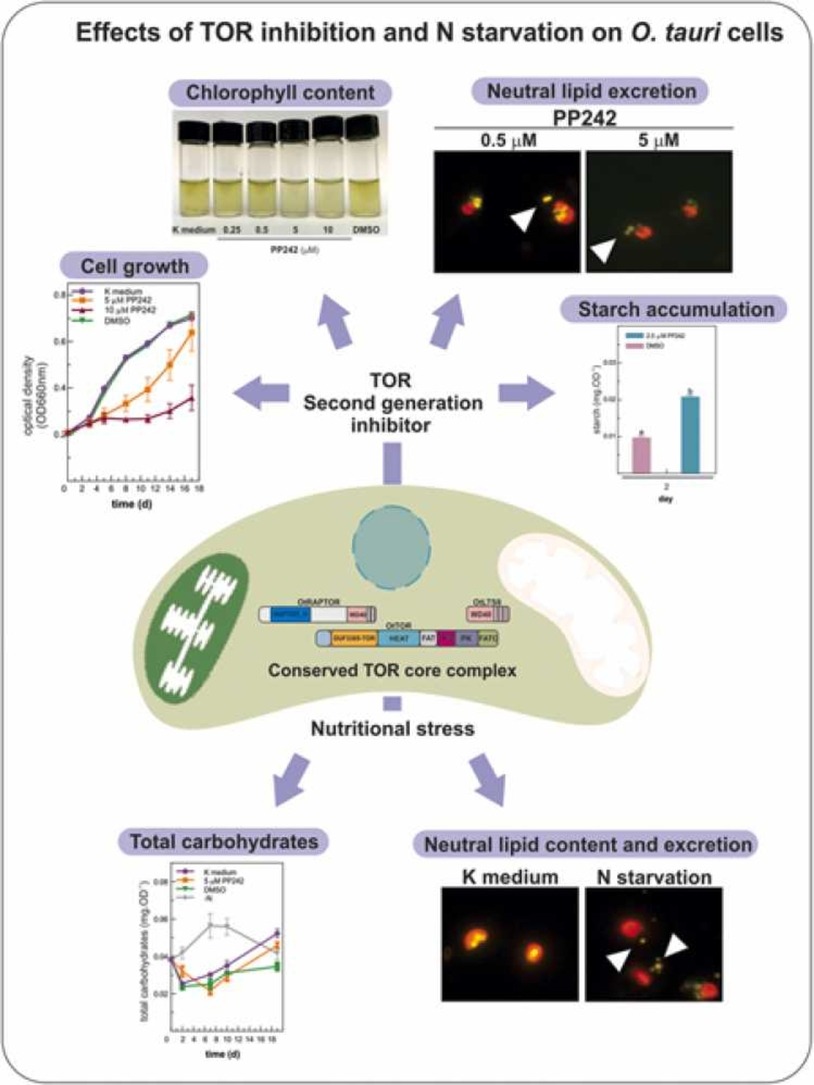Plant Science, 20 de julio, 111390, 2022
Highlights
TOR signaling is conserved in the green alga Ostreococcus tauri
TOR signaling is involved in cell growth, chlorophyll homeostasis and nutritional stress response
Second generation TOR inhibitor PP242 is an effective tool to downregulate TOR pathway
TOR inhibition induces starch and neutral lipid excretion like nitrogen stress condition
O. tauri is a good and simple model for studying TOR and its regulation in photosynthetic organisms
Abstract
Target of rapamycin (TOR) is a master regulator that controls growth and metabolism by integrating external and internal signals. Although there was a great progress in the study of TOR in plants and in the model alga Chlamydomonas, scarce data are available in other green algae. Thus, in this work we studied TOR signaling in Ostreococcus tauri, the smallest free-living eukaryote described to date. This picoalga is particularly important because it has a key site at the base of the green lineage and is part of the marine phytoplankton, contributing to global photosynthesis. We investigated OtTOR complex in silico and experimentally, by using first- and second-generation TOR inhibitors, such as rapamycin and PP242. We analyzed the effect of TOR down-regulation on cell growth and on the accumulation of carbon reserves. The results showed that O. tauri responds to TOR inhibitors more similarly to plants than to Chlamydomonas, being PP242 a valuable tool to study this pathway. Besides, Ottor expression analysis revealed that the kinase is dynamically regulated under nutritional stress. Our data indicate that TOR signaling is conserved in O. tauri and we propose this alga as a good and simple model for studying TOR kinase and its regulation.
carbon reserves, green algae, growth, nitrogen deprivation, TOR inhibitors, TOR kinase

